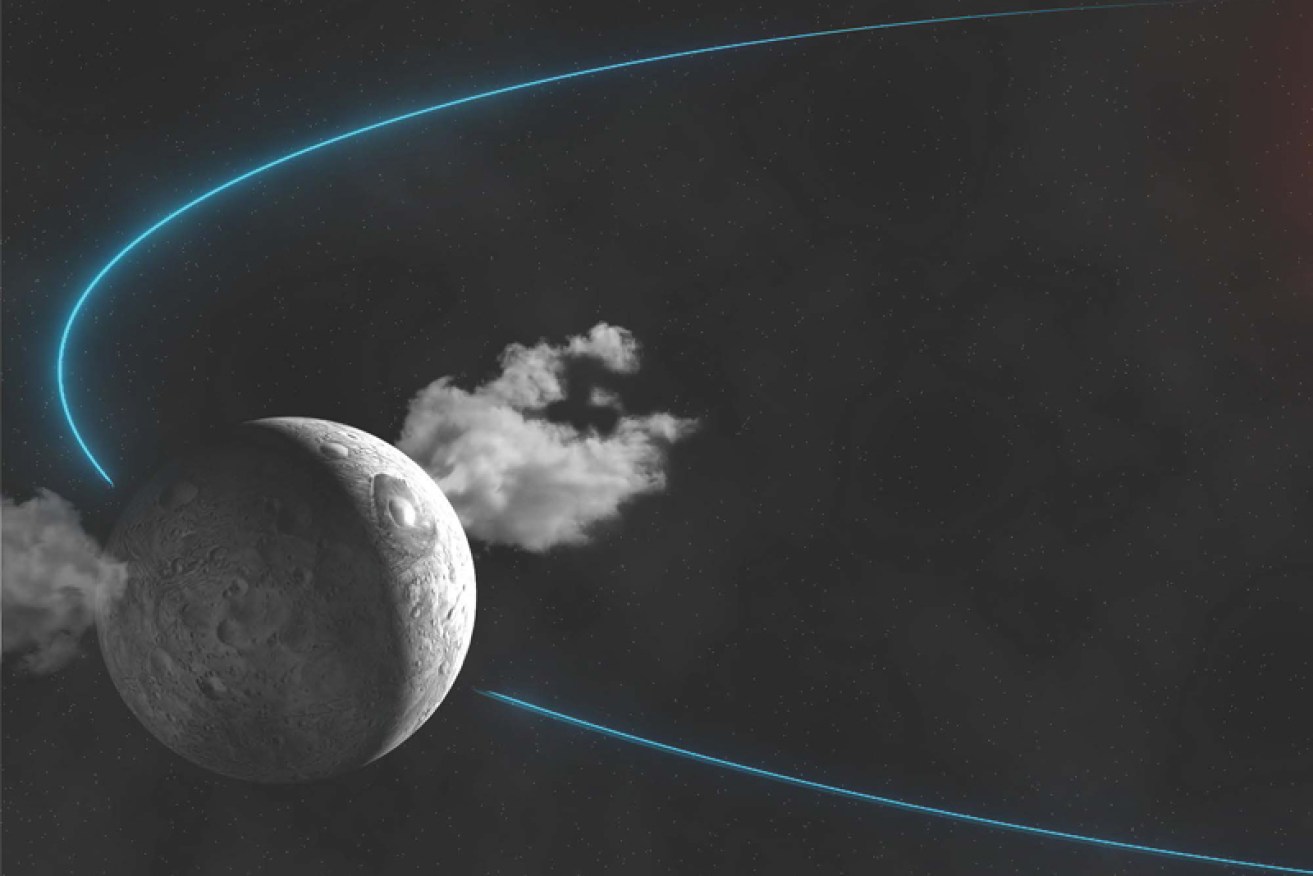‘Dwarf planet’ discovery: Is this where we came from?

AAP
Ceres, a tiny planet in the asteroid belt, spouts water vapour, a finding that strengthens theories that life on earth was kickstarted by a bombardment of space rocks, scientists say.
European astronomers reported they saw vapour spewing geyser-like from the surface of Ceres, the biggest object in the asteroid belt lying between Mars and Jupiter.
Ceres was first recorded in 1801 by the Italian astronomer Giuseppe Piazzi, who named it after the Roman goddess of agriculture and fertility.
Measuring 950 kilometres across, taking about four and a half years to orbit the sun, it was initially taken to be simply a massive asteroid, a huge piece of rubble left over from the creation of our planetary system.
Closer examination found it to be a planet-like sphere, believed to be a silicate core with an icy exterior.
In 2008, after fierce debate, the International Astronomical Union (IAU) promoted Ceres to the new category of “dwarf planet,” to which it also relegated Pluto, until then considered a full-fledged planet.
Writing in the journal Nature, a team led by Michael Kueppers of the European Space Agency (ESA) used an infrared instrument on the orbital telescope Herschel to scan Ceres four times between November 2011 and March 2013.
They found water vapour shooting from its surface from two fountain-like sources, at the rate of around six kilograms per second as Ceres neared the sun on its egg-shaped orbit.
“Does Ceres have a sub-surface ocean? Or are the two sources of water just isolated pockets?” France’s National Centre for Scientific Research (CNRS), which took part in the investigation, pondered in a statement announcing the discovery.
The observation boosts once-derided theories that billions of years ago, rocks carrying water and carbon molecules pounded the fledgling earth, providing it with the ingredients essential for life, said University of Central Florida astrophysicists Humberto Campins and Christine Comfort in a commentary.
“But the pieces of the puzzle of Solar System formation do not fit perfectly, and more is likely to be discovered through further studies of the miniature worlds that we call asteroids,” they cautioned.
More may be revealed next year when a NASA probe, Dawn, reaches Ceres fresh from a mission to the big asteroid called Vesta, it is hoped.








